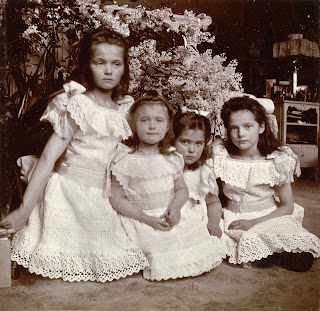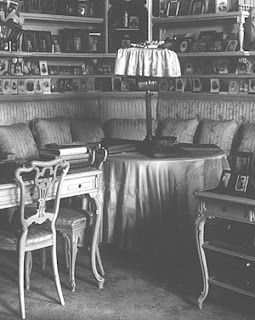http://www.alexanderpalace.org/palace/mauve.html
http://nicholsonadvisory.com/the-mauve-boudoir
http://otma.blog.cz/galerie/serikovy-kabinet
https://vk.com/lastromanovs
https://www.flickr.com/photos/99377981@N03/page1
https://thealexanderpalace.fandom.com/wiki/The_Mauve_(Lilac)_Boudoir
http://www.frozentears.org/Pages/Romanovy-Screen.html
https://tsarnicholas.org/2019/05/22/recreation-of-furniture-for-mauve-lilac-boudoir-underway/
https://vk.com/stavros_spb
https://kdflora.tumblr.com/post/187329815063/there-is-some-reconstruction-happening-at-the
http://geglov2.narod.ru/Foto/Aleks_p/Aleks_p_f_002_03.htm
https://www.spb-guide.ru/page_20146.htm
https://www.flatproject.ru/interior-design/interior/interery-bolshogo-gatchinskogo-dvorca-centralnyj-korpus.html
Alexandra moved into the Alexander Palace when she was 22. Until then she felt very much like a stranger in Russia and generally a constant guest with no home of her own; all her life having spent summers at Kranichstein and Seeheim and winters at Darmstadt when in Germany and, when visiting her grandmother Queen Victoria, stayed at Windsor Castle, Balmoral Castle and Osborne House in England, Scotland and the Isle of Wight. But now, in her new home in Russia, the young Empress would have her first chance to make creative decisions about her own living spaces. Most of what she knew about decorating she learned from reading magazines and her grandmother's advice.
Due to her upbringing and Queen Victoria's influence, Alexandra's tastes in decor were very plain and English, with the emphasis being purely on sentimental value rather than on displays of wealth. The decorator hired by the Imperial couple was Roman Meltzer, to whom Alexandra made suggestions for the placement of the fabrics and colours of furniture. She wanted her husband and children to live in a cozy, informal environment and to have a room where Nicholas could come to unwind after a long day of hard work on affairs of state and where the husband and wife could spend time alone together.
The Mauve Boudoir, known in Russian as Сирень Кабинет, was Alexandra's favourite room in the Alexander Palace, and it was the center of her family's life for 20 years. It was the most celebrated room in Russia, and people often gossiped about what could be going on inside. But it was also often looked down on for its modest style and family atmosphere. Despite the changes in fashion and decorating styles that came and went over the 21 years, Alexandra absolutely refused to have the room remodeled. It had too many memories and too much sentimental value for her to even consider it, and she wanted to keep it looking as it did when she married. Because of this, the style of the Mauve Boudoir was considered very fashionable and modern in 1896, but in 1917 it was considered dated and old-fashioned.
The Mauve Boudoir was so-called because of the lilac or opal colour silk on the walls and upholstery of the furniture. This silk was made by the Charles Burger firm in France, which is still in operation today. Specifically, the silk on the walls, curtains and portieres was Violet Gourgourrand Stripe; and that on the upholstered furniture was Violet Lampas Reseda, which had a raised floral motif woven into it. On the bottom part of the walls was wooden paneling painted in an ivory white colour. In the back of the room was a corner divan and a fireplace with floral-patterned tiles.
The draped double doors had floral carvings on them, and one could enter the Mauve Boudoir either from the Imperial Bedroom or the Palisander Room. The aforementioned curtain draping both double doors and the two giant, arched windows were sewn with ribbons, fringe and large tassels. The windows themselves were covered only with a thin silk shade, filling the room with natural light during the day. Next to the door leading to the bedroom was a corner chair, which was the site of many photos taken in the boudoir.
The ceiling was decorated with remaining paintings from an earlier remodelling of the room, and a frieze painting of irises intertwined with ribbons in the Art Nouveau style surrounded the cornice, completed in 1896. Beneath the frieze were attached bronze railings from which paintings were hung on large cords.
The Axminster carpeting of the room was pistachio green with the leaves pattern in a darker hue; it was brought from Great Britain and was sewn together in strips.
The Alexander Palace was wired for electricity in 1895 in preparation for Nicholas and Alexandra coming to live in the palace. The wires for the lamps in the Mauve Boudoir ran right underneath the silk wall covering, with the fuse boxes for the lighting in the basement. At night the lighting of the room was soft, coming from table lamps and wall-mounted picture lamps, illuminating the most important paintings in the room. The lights were centrally controlled and would light up one after the other when switched on. There was no central chandelier.
The chairs in the Mauve Boudoir were made from lemonwood and carved with crisp motifs of swirls and shells, and had a delicate appearance.
Behind a wooden and glass screen was a mauve-coloured chaise longue. They stood beside a planter filled year-round with fragrant plants and flowers. The couch was built on a wood core with springs and many layers of soft padding, double covered in silk and decorated with tassels and thick fringe. Here Alexandra lay propped up with hand-embroidered pillows and covered with a crocheted, silk-lined coverlet that she had sewn herself.
In baskets were kept puzzles and board games for the children to play with; and issues of English and Russian magazines as well as American magazines, National Geographic among them, were stacked in stands with folders of sheet music. On the walls and in cubbies on each side of the alcove seat were copies of Alexandra's favourite books, almost all of them serious works on religion and philosophy as well as romance novels, art books and travel guides and written in English. The tables, the white J. Becker piano and the corner divan were covered with framed photographs of family and relatives, and large photo albums with the Romanovs' own family photos were kept stacked on tables and placed on shelves. On the walls hung many paintings and watercolours of land or seascapes, flowers and religious scenes.
By one of the windows stood Alexandra's writing desk, and a telephone was installed near the sofa.
Family photos taken in the Mauve Room:
(above image courtesy of Ilya Grigoryev at lastromanovs on VK)
(above photos courtesy of TatianaZ on Flickr)
Photos of the Mauve Boudoir itself:
Two paintings from the Mauve Boudoir:
Paintings of the Mauve Boudoir:
After the Imperial family left the Alexander Palace for internal exile in 1917, some autochrome (early colour) photographs were taken of the palace's interiors, including the Mauve Boudoir.
Adjusted to how it may have looked with the eye:
Hand-tinted colour photo of the Mauve Boudoir taken in 1931:
From then on, the palace functioned as a museum until the outbreak of World War Two. It then served as headquarters for the SS during the Nazi occupation; and later on in the 1940s, Stalin wanted to erase all memory of the Romanovs, so most of the palace's rooms were destroyed, including the Mauve Boudoir. Until the fall of Communism, the palace was used as a training base for the Soviet Navy.
In the 1990s, the Alexander Palace was reopened to the public and was again functioning as a museum. Small-scale restoration was made for the rooms, and a film, Gleb Panfilov's Romanovs: An Imperial Family, was filmed there in 2000. A small part of the film's recreation of the Mauve Boudoir can be seen in one scene:
However, the family rooms that were reconstructed for the film were not kept, although the recreated furniture used as props remained in the palace after filming wrapped. These together with the other replacements that were mainly not replicas of the originals resulted in the Mauve Boudoir looking like a generic corner in an antique store for years, with only a giant photo in the back of the room to remind visitors of its former beauty:
In 2015, the Alexander Palace was closed to the public for restoration. This restoration, which is currently ongoing, is what all Romanov fans have been longing for for two decades: the interiors and furniture of the family's private rooms are at last being recreated as they looked during Nicholas' and Alexandra's time, in exact detail. The reason why this could not be done before was because there was not enough money for proper funding. The companies carrying out the restoration are Studio44, Artcorpus, and the Stavros firm of St. Petersburg. They upload progress photos of this wonderful work, as they know how much it is appreciated. Here are photos that have come out of the Mauve Boudoir and its furniture.
(above photos courtesy of Stavros via Paul Gilbert's Tsar Nicholas blog)
(photos courtesy of the Stavros page on VK)
(photo courtesy of kdflora on Tumblr)




























































































